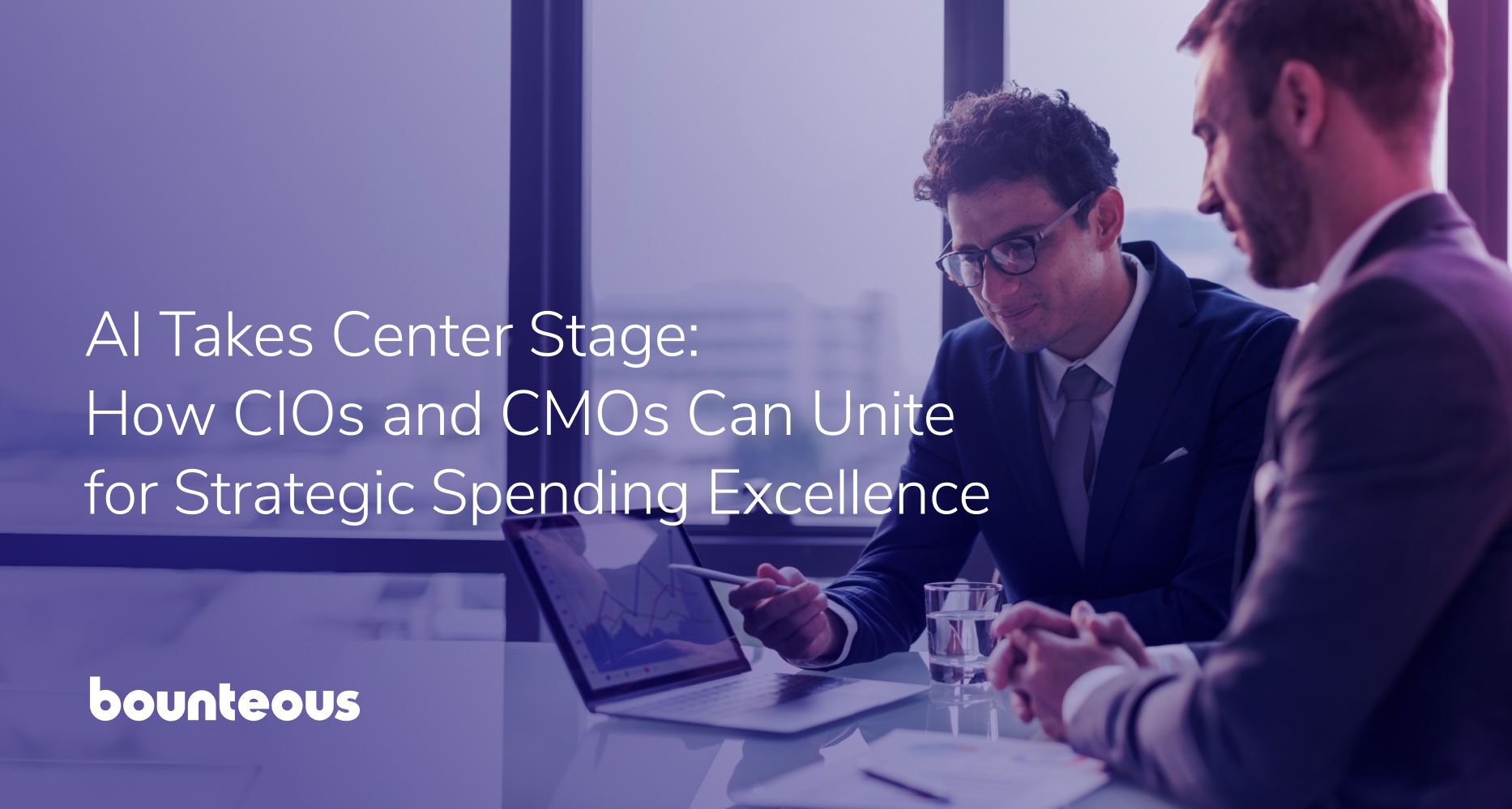AI Takes Center Stage: How CIOs and CMOs Can Unite for Strategic Spending Excellence

The Blurring Lines Between CIOs and CMOs
The roles of CIOs and CMOs are blurring, and they now share common goals and priorities. This is in part due to AI and digital transformation. Together, CIOs and CMOs need to build customer-centric strategies with data and AI at their core.
Both organizations are using data. CIOs are using data and insights to optimize processes and personalize interactions. CMOs use data to manage customer relationships, so they need accurate data, analytics, and automated tools to improve these relationships.
Enter AI. Organizations are adopting AI or leveraging AI in new and exciting ways. Leaders surveyed by Bounteous report that their top spend in 2025 and beyond will be on AI. This spend is essential, as our research also found that digitally advanced companies are 2x as likely to experience double-digit growth than those that don’t.
Even with this advantage, many organizations are experiencing an AI disconnect between departments, miscommunication and disagreements on AI ownership, funding initiatives, internal leadership, training, and KPIs.
Challenges to AI Adoption
Sixty-six percent of global decision-makers identified improving IT capabilities to boost agility and innovation as a primary driver of digital transformation. Despite the consensus on the importance of digital transformation, there are several challenges that hinder the integration and optimization of AI.
Disconnect Between Departments on AI Initiatives
Teams beyond IT and marketing work in silos with varying objectives and lack an understanding of how AI should be used within the organization. This can lead to fragmented efforts and missed outcomes.
Examine the following questions internally:
- How is your organization ensuring that best practices and successes are being shared across teams?
- Are there clear channels, forums, or collaboration time set up where teams can share what they are working on?
- Is there a clear, collaborative effort, Center of Excellence, or cross-functional task force that is making progress on uniting internal efforts for AI success?
AI Ownership
Clear ownership over AI initiatives is essential: this includes accountability and streamlined decision-making processes that align with the organization’s strategic goals. Without a clear AI leader, organizations risk misalignment and the inefficiencies that come with it.
Examine the following questions internally:
- How are AI opportunities and investments identified and approved across teams?
- Who is accountable for ensuring that AI projects align with company-wide strategic objectives?
- Are there defined decision-making processes in place for AI-related initiatives, or do they vary across departments?
Financial Investment
AI is the top area for increased spend for CIOs and CMOs, with 84% of companies saying they will increase spending on data and AI for digital transformation initiatives and technology. This reflects the value and potential of AI to drive innovation and growth. However, AI demands careful management to ensure the increased spend translates to real results, which requires robust strategies and governance frameworks.
Examine the following questions internally:
- How is your organization tracking ROI or tangible outcomes from AI investments?
- Does your AI spending align with a clearly articulated roadmap or strategic priorities?
- Are there financial guardrails, oversight, or performance benchmarks in place for AI-related spending?
Clearly Identified AI Leadership
It is important to have a team of individuals who are considered “AI Champions” who can advocate for and effectively lead AI integration. These individuals could be your CIO, CMO, data and AI leader, AI subject matter expert, or AI thought leader.
To determine if your company has a team of AI Champions, examine the following questions internally:
- Who are the visible champions or decision-makers driving AI across departments, and are they empowered?
- Is there a recognized internal figure or group responsible for setting the AI vision and connecting it to business impact?
- Do team members know who to go to for AI guidance, escalation, or strategic direction?
- How is AI success / progress / challenges communicated today to the organization?
AI Training
Organizations need to invest in developing the skills of their workforce to use AI tools effectively. This includes but is not limited to technology training; even those not in delivery roles should have a basic understanding of AI’s capabilities and limitations.
Examine the following questions internally:
- Are there regular training opportunities or resources available for employees to learn about AI tools and best practices?
- How confident are different teams in their ability to evaluate, adopt, or use AI in their workflows?
- Is AI literacy (not just technical proficiency) considered a core competency across departments?
Measures of Success
It is essential that leaders quantify what AI success is and strive to drive continuous improvement. KPIs should align with overarching business goals and provide insights into the effectiveness and impact of AI initiatives.
Examine the following questions internally:
- What KPIs or metrics does your organization use to define AI success, and are they tied to strategic business goals?
- How often are AI project outcomes reviewed, and is there a feedback loop to inform future efforts?
- Are you capturing both short-term performance gains and long-term transformational impact from your AI initiatives?
Collaborating across teams and holistically addressing these challenges is the key to unlocking AI’s full potential and driving meaningful digital transformation within your organization.
Why Bounteous
To keep their companies on the forefront of digital transformation, leading executives seek out third-party service providers like Bounteous to work with them as partners. Partners enable organizations to develop new internal systems and processes to facilitate interdepartmental collaboration, breaking down silos and preventing fragmented technological adoption.
Download our whitepaper, “Stronger Together: CIOs and CMOs Must Align to Win,” to learn more about the challenges CIOs and CMOs are facing, and how we can help.


